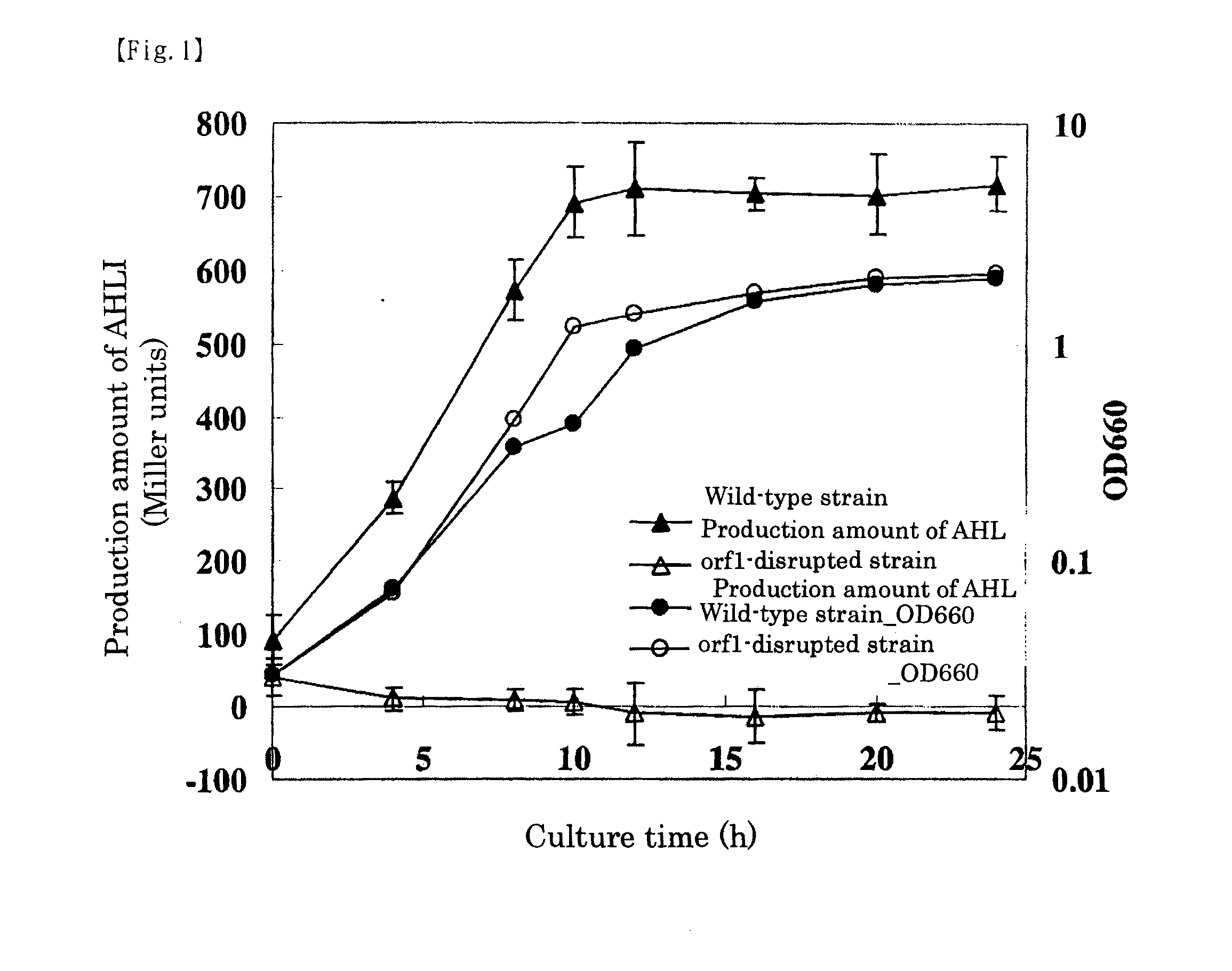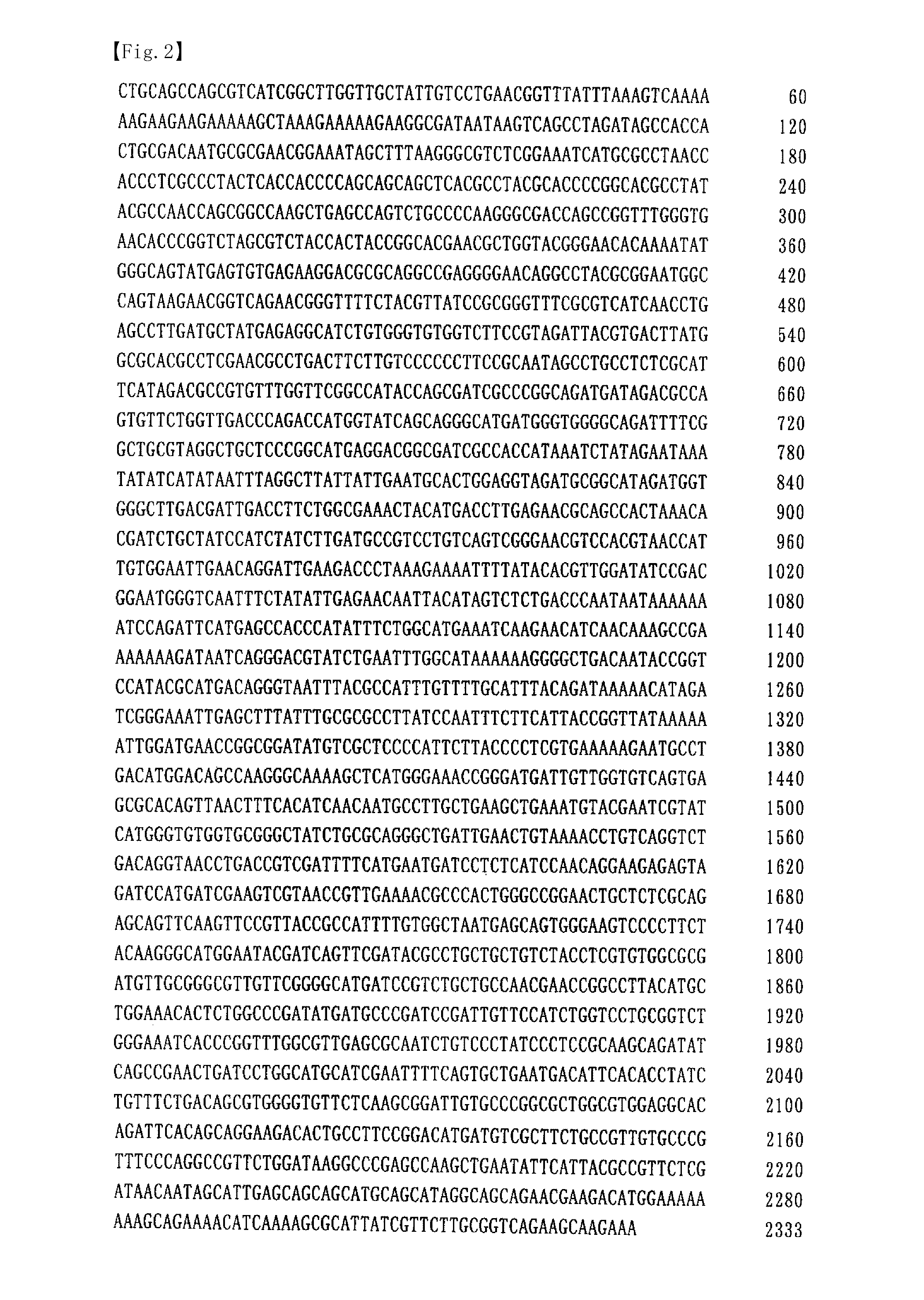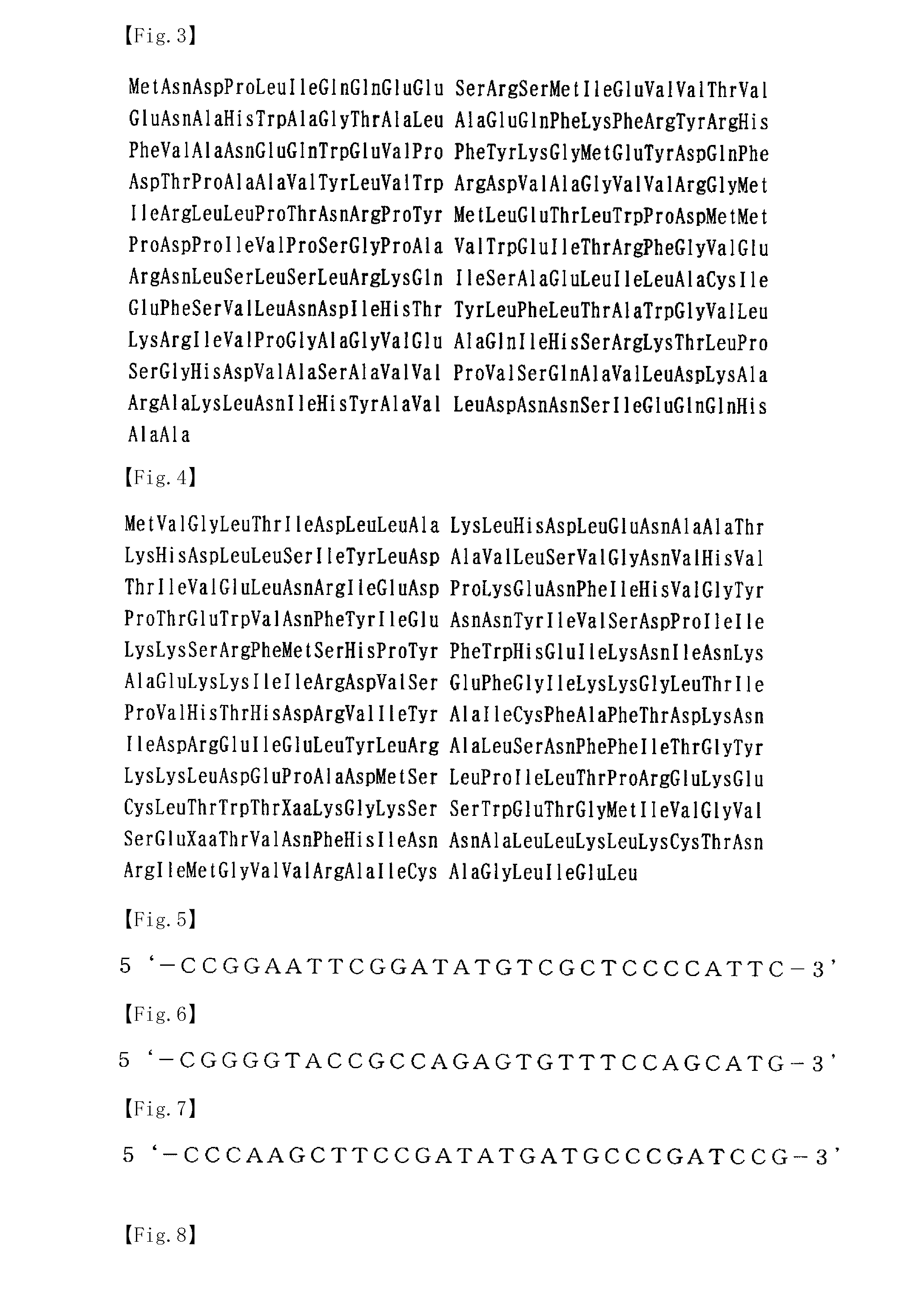Gene involved in quorum-sensing system of acetic acid bacterium, acetic acid bacterium bred by modification of the gene and method for production of vinegar by using the acetic acid bacterium
a technology gene, which is applied in the direction of peptides, transferases, peptide sources, etc., can solve the problems of not all reporter strains brought success, and the cloning of genes involved in the quorum-sensing system failed, so as to enhance the fermentation ability of acetic acid bacterium, reduce or delete the function of proteins, and efficiently produce vinegar
- Summary
- Abstract
- Description
- Claims
- Application Information
AI Technical Summary
Benefits of technology
Problems solved by technology
Method used
Image
Examples
example 1
Isolation of a Gene Encoding an Acyl Homoserine Lactone Synthase Derived from an Acetic Acid Bacterium
[0088]In order to isolate a gene encoding an acyl homoserine lactone synthase of an acetic acid bacterium, Gluconacetobacter intermedius NCI1051 (hereinafter may be referred to as a wild-type strain) that was deposited under the Budapest Treaty under Accession Number: FERM BP-10767 on Jan. 31, 2007 with the International Patent Organism Depositary at the National Institute of Advanced Industrial Science and Technology (Central 6, 1-1 Higashi 1-Chome, Tsukuba-shi, Ibaraki-ken, Japan) was used to prepare a chromosomal DNA library of this wild-type strain.
[0089]Chromosomal DNA was extracted using GenomicPrep Cells and Tissue DNA Isolation Kit (Amersham Biosciences). The obtained chromosomal DNA was treated with the restriction enzyme Pst I (TAKARA BIO INC.) for 1 hour at 37° C.
[0090]Subsequently, the digested chromosomal DNA fragments were ligated to pUC19 to prepare recombinant DNAs.
[...
example 2
Preparation of a Strain Disrupted a Gene Encoding an Acyl Homoserine Lactone Synthase
[0096]Primer 1 (see FIG. 5 and SEQ ID NO: 4 in the sequence listing) and primer 2 (see FIG. 6 and SEQ ID NO: 5 in the sequence listing) were synthesized based on the nucleotide sequence of orf1 obtained in Example 1, an upstream sequence and a 5′-side sequence of orf1 were amplified by PCR method using the chromosomal DNA of Gluconacetobacter intermedius NCI 1051 as a template, and the amplified product was treated with the restriction enzymes EcoRI and KpnI (TAKARA BIO INC.) to prepare a DNA fragment (DNA fragment 1).
[0097]Similarly, primer 3 (see FIG. 7 and SEQ ID NO: 6 in the sequence listing) and primer 4 (see FIG. 8 and SEQ ID NO: 7 in the sequence listing) were synthesized, a 3′-side sequence and a downstream sequence of the orf1 structural gene were amplified by PCR method using the chromosomal DNA of Gluconacetobacter intermedius NCI 1051 as a template, and the amplified product was treated ...
example 3
Functional Analysis of Orf1
[0105]The activity of an acyl homoserine lactone synthase in a wild-type strain and the orf1-disrupted gene was determined. The activity of an acyl homoserine lactone synthase was detected by bioassay method (see for example, J. Bacteriol., Vol. 188, No. 5, pp. 1943-1949, 2006).
[0106]First, a wild-type strain and the orf1-disrupted strain were cultured in a YPG medium containing 2% ethanol and 1% Celluclast 1.5 L (Novozymes), and samples of culture broths were taken intermittently. These culture broths were filtered with a 0.22 μm filter to obtain supernatants, respectively. To each supernatant, an equal amount of ethyl acetate was added and stirred well, and the ethyl acetate fraction was recovered. An equal amount of ethyl acetate was added again to the aqueous fraction and the ethyl acetate fraction was recovered.
[0107]The ethyl acetate fractions thus obtained were put together and ethyl acetate was removed by a centrifugal evaporator. Thus generated pr...
PUM
| Property | Measurement | Unit |
|---|---|---|
| Fraction | aaaaa | aaaaa |
| Acidity | aaaaa | aaaaa |
Abstract
Description
Claims
Application Information
 Login to View More
Login to View More - R&D
- Intellectual Property
- Life Sciences
- Materials
- Tech Scout
- Unparalleled Data Quality
- Higher Quality Content
- 60% Fewer Hallucinations
Browse by: Latest US Patents, China's latest patents, Technical Efficacy Thesaurus, Application Domain, Technology Topic, Popular Technical Reports.
© 2025 PatSnap. All rights reserved.Legal|Privacy policy|Modern Slavery Act Transparency Statement|Sitemap|About US| Contact US: help@patsnap.com



